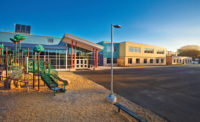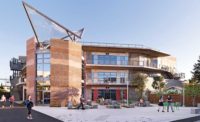Rural Lake Mills, Wis., replaced an overcrowded, outdated elementary school, built in 1964, with a K-4 elementary school that was not just up to date but also designed under the LEED v4 Beta Program, the next version of the LEED rating system. Consistent with that mind-set, the construction team took a collaborative and holistic approach to both the project and the community it serves.
Working through the new requirements of the LEED v4 rating system offered its own unique challenges. As a beta site, the requirements of the program changed six times during design and construction, and product manufacturers were behind the curve in providing “certified” materials that would meet the Materials & Resources credit requirements. Investing a significant amount of time, the team researched products and talked directly with manufacturers to ensure that the products the team specified would meet the requirements.
Now that the schools are occupied, the pupils and staff have experienced benefits from the improvements that result from a LEED Platinum rating, says Theresa Lehman, sustainable services director for contractor Miron Construction. Test scores, the children’s behavior, and allergy and asthma rates have all improved, and teachers now use the building itself as a prop and model for science lessons on renewable energy and sustainable living.
The elementary-school project has educated the community, too. While many residents had resisted referendums on taxes to replace the district’s old schools, the measurable improvements in the new schools have boosted community pride. People are moving from a nearby city to put their children in the new schools, Lehman says.






